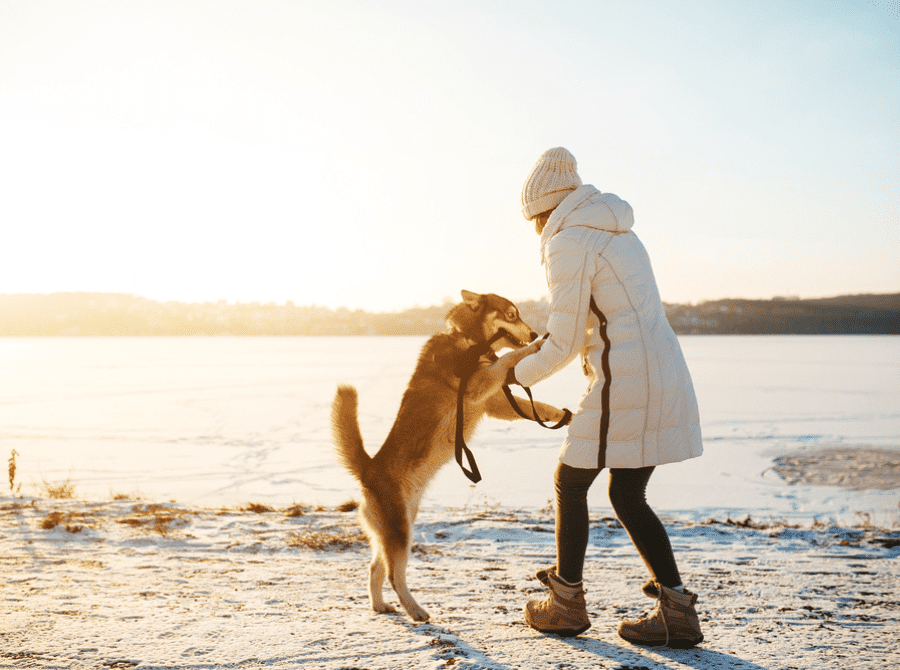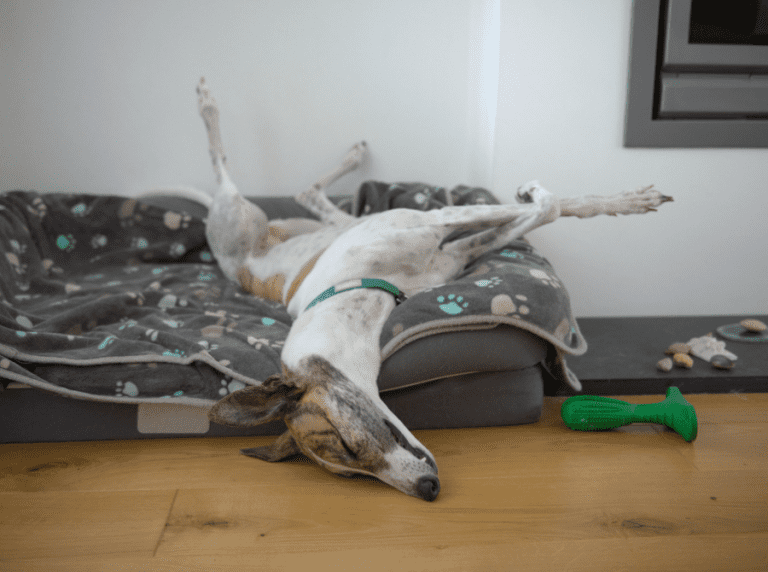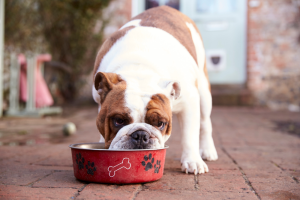
Now that it’s dark early, staying safe when out and about dog walking is important.

Stay active outdoors
Stay active when walking your dog in the cold to keep their (and your) temperature up!
Pick your dog walking times carefully
Go for your walk when the sun has risen and the temperature has risen slightly! If the weather is dreadful, there is no harm in waiting for a let-up in the weather before heading out.
If your dog doesn't have an undercoat, pop a little coat on them
In general, a dog’s coat is great for colder weather. However, some breeds are better adapted to cold weather than others. If your dog has a double coat (Huskies, Labradors and Golden Retrievers), they will need a good dry down when you get in from your walk and possibly a drying coat for your journey home.
Some dogs made for the colder weather may become more active in the winter months and enjoy their time out.
Dogs with less hair, like Whippets and Grey Hounds, may prefer to stay home during the winter. They may still enjoy their walks, but you might find they need to be shorter, keeping them moving and getting them a little coat (if they’ll let you!)
If your dog has no undercoat or has just been clipped, they will instantly feel the cold and need a coat to keep them warm.
Clean coats and paws after walks
Paths are covered in de-icing chemicals or salts that harm your dog, so be sure to clean their coats and paws when you come back from your walks.
Clean between their toes
Be sure to remove mud and snow from between your dog’s toes. If it is left there, it can make their paws sore!
Feed slightly more
Your dog needs more energy to keep warm, so you may need to feed them more than you usually do.
Light them up
When heading out if it’s still dark or your evening walk is pitch black, invest in a high-vis jacket (for you and your dog). You can also get light-up collars or lights that clip onto their existing collars to help them be seen at night!
Staying safe dog walking
Water, ice and snow
Many dogs love the snow. It is new and exciting, and they can play for ages in it! However, snow can become stuck in their coats in balls, meaning they will get colder quicker.
walking your dog by a river, lake, or other body of water, you must be mindful that this may now be frozen over. If your dog falls in, they will struggle to get out, and you can put yourself in danger if you follow them in to help. We recommend avoiding these areas on your winter walks.
2. Staying active
While your dog is running around, their temperature will stay up, but it’s important to be mindful that their temperature will drop on your walk home or car ride home. Putting a towel down and a drying coat on is a good option to ensure they don’t lose too much heat and can dry off quicker.
3. Hydration
Although it isn’t hot, keeping your dog hydrated is just as important. Be sure your dog has access to fresh water.
How do I know if my dog is cold?
This will vary depending on the dog, but if you notice one or more of the below signs, then you need to head home and get your dog warm:
- Whining
- Shivering
- Anxious
- Stops or lays down



